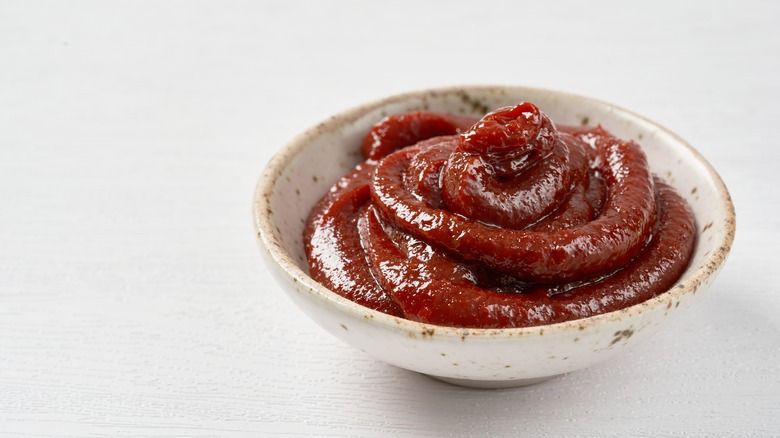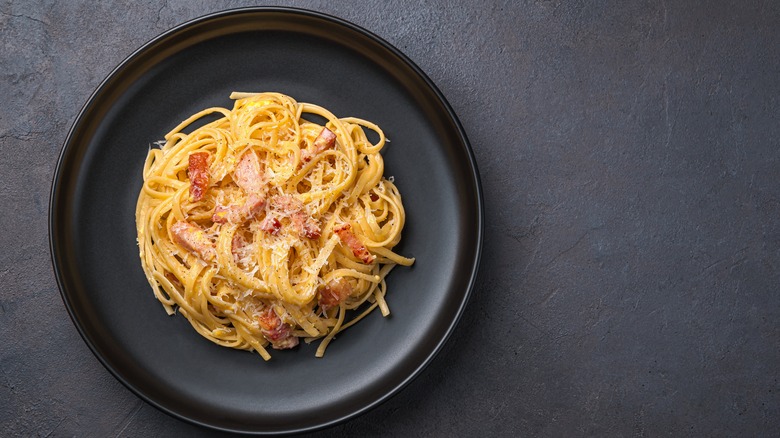The Simple Addition Of Gochujang Takes Any Carbonara Pasta To The Next Level
Some ingredients are always worthwhile to have stocked, their essence adding that extra pop to a variety of dishes. Such a quality certainly applies to gochujang, a fermented Korean chili paste. In addition to some spice, the product has a complex palate of sweetness, a bit of tang, and a tasty dose of umami, which means it lends a savoriness to dishes.
Looking for ways to integrate such a tasty component in recipes outside of Korean staples? Turn to spaghetti carbonara, the decadent pasta dish loaded with pancetta and a creamy yolk-based sauce. The gochujang fits right in, complementing the velvety flavors with a hint of spice, as well as amplifying the dish's complexity.
To expand the gochujang's sauce base, throw in some vinegar and honey, too, playing on gochujang's sweet and tangy qualities. Such a Korean-Italian fusion builds a unique palate, all the while coming together in only a few minutes.
Gochujang introduces a complex, spicy note to carbonara
Incorporating the gochujang into carbonara's framework is straightforward. Simply mix the paste with the vinegar and honey before dissolving in the cooked pancetta. The heated pork fat will help meld the sticky paste into the entire pasta. And if you're using an especially pungent version of gochujang, toast the paste on a pan first to minimize some of its bold flavors.
Plus, pork and gochujang are a classic Korean pairing, employed in dishes like jeyuk bokkeum (pork bulgogi). Therefore, trade the pasta for udon noodles and add bacon to make a more Asian-leaning interpretation. A shaving of parmesan cheese makes an umami-based pairing with the gochujang. And a garnish of scallions always does wonders, too, adding a bright bite. No matter the source cuisine, gochujang makes for a remarkable sauce base. So purchase a bin for the fridge, and add a spoon at a time; it'll reinvent dishes with its spicy touch.

